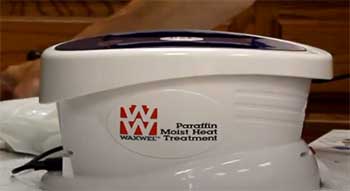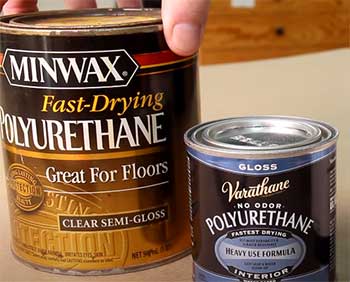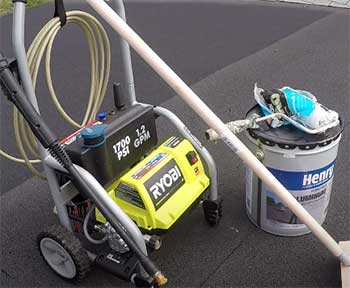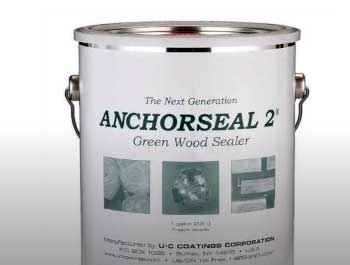Although a popular choice in the production of furniture or housing, wood is vulnerable to the elements. Changing temperature, humidity, and weather can cause it to expand or shrink. Therefore, it loses its original shape and might get twisted or warped.
This is where you would want a good wood sealer to protect your projects. These emulsions seal up the surface of the wood, preventing it from absorbing excess moisture and water from its surroundings.
Anchorseal is one such product. However, as it is not exactly cheap, we can discuss a few alternatives to it.
Anchorseal Substitutes That Works!
- Paraffin Wax

Paraffin wax is a decent alternative to Anchorseal. However, if not applied currently, it does crack and flake.
If done properly, the seal will be good enough to protect your woodwork. Here is what you will have to do:
We recommend purchasing a turkey roaster from your local stores or online.
Although not capable of heating to greater limits, they can heat the paraffin to the right temperatures.
Heat the wax to around 250° Fahrenheit, the average requirement for most woods.
There are certain exceptions like the woods that generally have lower moisture contents, like mesquite and cedar, or woods that have dried up a lot already. Drier woods require around 190° Fahrenheit.
Dip the blank into the paraffin and let it sit for a few moments before taking it out. This makes sure that the wax can seep into the wood fibers to attach to the wooden surface.
If the surface is somewhat dry, resembling the condition of wood after a heavy coating of oil has been applied to it, you have to decrease the
temperature and retry that.
In case the block seems opaque and fine cracks have developed in the wax coating, try again after increasing the temperature.
Wet, freshly trimmed woods packed with moisture need a day or two to air dry before the sealing can be completed. Otherwise, the wax will not stick properly.
Sycamore, Bradford pear, and red elm are woods high in moisture content. In fact, it can go up to 110% when trimmed fresh, and they will leak water from the end grain after being cut.
Stack the blocks to let a little airflow out until the top surface seems dry before sealing them. The results will be significantly better.
- Polyurethane Finish

The purpose of sealing the board/log’s end is to stop the water vapor from escaping.
It will leave the end wood must faster than surface wood, causing faster wood shrinkage in the log’s end.
Eventually, this will lead to splitting and cracking. You need to force the vapor to leave through the log’s surface in the entire log.
Try using many layers of a polyurethane finish for the job.
Around ten coats should give a somewhat good barrier for 1 month. Of course, consider how that much poly might end up costing as much as Anchorseal.
- Roof Coating

Any type of roof coating can work as a substitute for Anchorseal.
For that, thin it down with adequate diesel or kerosene so it is easier to brush on. Roof coating is thicker in consistency than Anchorseal.
Irrespective of where it is the aluminized kind or blackjack, this method should work.
Actually, an aluminum mobile home roof coating is quite thin and can be tainted on as-in after you have given the bucket a rugged stirring.
- Enamel Paint
Any old, unwanted paint should be able to do the trick but we found that enamel paint works better in many cases. Apply a few layers and wait for it to dry.
Keep in mind that any sort of paint is not that great an alternative for Anchorseal.
Is Anchorseal Worth It?

Even though Anchorseal is a bit pricier than the alternatives we suggested above, there really is no comparison in the big picture.
Anchorseal is specifically designed to safeguard wooden blocks from cracks and breaks.
Therefore, many experts swear by the product, recommending people to use it like someone else is paying for it.
Frequently Asked Questions (FAQ)
Ideally, you should be using the wood sealant. If not, there are cheaper alternatives.
Yes, PVA can be used as a high-performance sealer, bonding agent, dust proofer, and primer.
Anchorseal is a non-toxic wax and water emulsion.
Wood sealers like Anchorseal can be used.
Bottom Line
If you have no experience in woodworking, choosing the best way to seal wooden logs can be difficult. Even the best Anchorseal alternative will provide a sealing solution for no more than a month.
A correctly sealed surface appears fairly evenly coated and clear. Check the looks of the surface.
